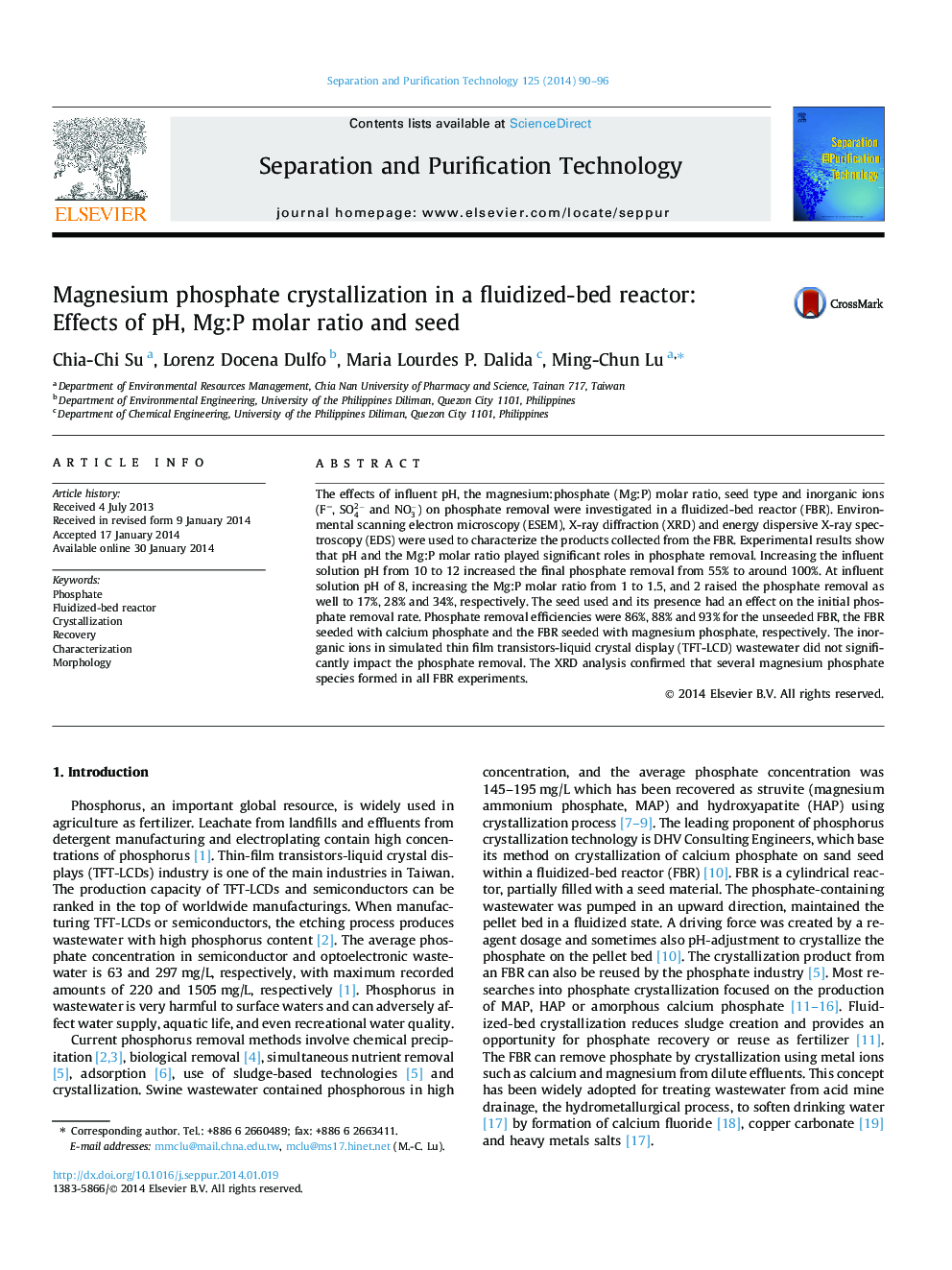| Article ID | Journal | Published Year | Pages | File Type |
|---|---|---|---|---|
| 641314 | Separation and Purification Technology | 2014 | 7 Pages |
Abstract
The effects of influent pH, the magnesium:phosphate (Mg:P) molar ratio, seed type and inorganic ions (Fâ, SO42- and NO3-) on phosphate removal were investigated in a fluidized-bed reactor (FBR). Environmental scanning electron microscopy (ESEM), X-ray diffraction (XRD) and energy dispersive X-ray spectroscopy (EDS) were used to characterize the products collected from the FBR. Experimental results show that pH and the Mg:P molar ratio played significant roles in phosphate removal. Increasing the influent solution pH from 10 to 12 increased the final phosphate removal from 55% to around 100%. At influent solution pH of 8, increasing the Mg:P molar ratio from 1 to 1.5, and 2 raised the phosphate removal as well to 17%, 28% and 34%, respectively. The seed used and its presence had an effect on the initial phosphate removal rate. Phosphate removal efficiencies were 86%, 88% and 93% for the unseeded FBR, the FBR seeded with calcium phosphate and the FBR seeded with magnesium phosphate, respectively. The inorganic ions in simulated thin film transistors-liquid crystal display (TFT-LCD) wastewater did not significantly impact the phosphate removal. The XRD analysis confirmed that several magnesium phosphate species formed in all FBR experiments.
Related Topics
Physical Sciences and Engineering
Chemical Engineering
Filtration and Separation
Authors
Chia-Chi Su, Lorenz Docena Dulfo, Maria Lourdes P. Dalida, Ming-Chun Lu,
